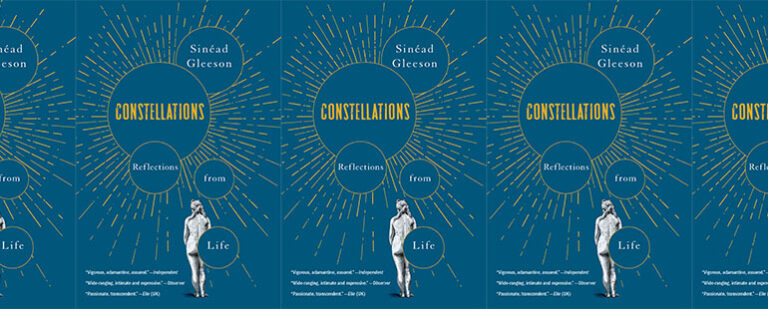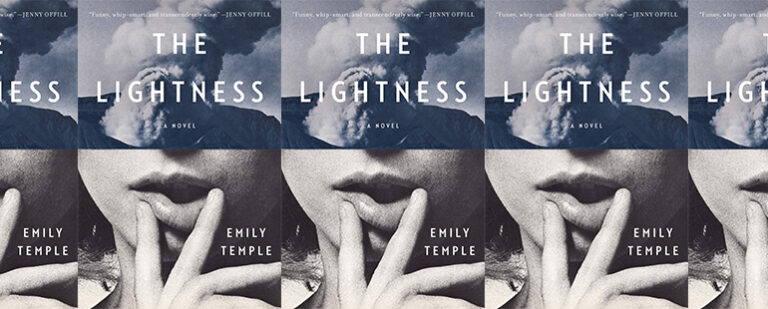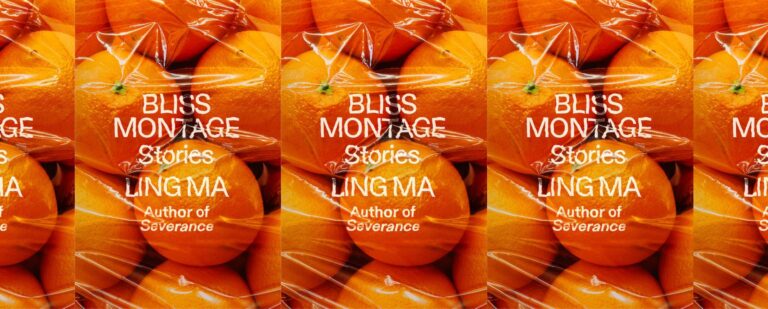The Century’s Quiet Crises
With her third collection, The Century, out last week, Éireann Lorsung’s ambition is clear: to conduct a historical audit in poetry of the points of history her life touches. This imperative is increasingly common—many contemporary poets participate in, if not entirely contribute to, the project of ethical calibration in our period of visibly interconnected crises. The marker of such a work is a foregrounding of its status as an investigative medium, whether by sourcing ecopoetry, documentary poetics, historical poetics, or a blend of these as a basis for a collection; examples are as broad as the historical record ranges, from Honorée Fannone Jeffers’s The Age of Phillis to JD Pluecker’s Ford Over, and from Don Mee Choi’s DMZ Colony to Solmaz Sharif’s Look. It is no coincidence that each of these details the global range of the victims of American empire. For better or worse, poets and readers of poetry alike look to the poem for a kind of secular guidance on how to feel and think about calamity itself. This blended, postmodern mode of formally lyric and ethically-driven witness and documentary poetry begins with Muriel Rukeyser, whose wide-ranging work considered historical events both at home and abroad.
For a contemporary poet, one way to undertake this project is by way of historiography, or contending with history itself as an ongoing, shifting subject: “and outside the room, the crush of history goes on,” Lorsung notes in The Century’s final poem, with lament. Lorsung’s metahistorical approach makes plain the problem of historical knowledge not just for its complications as a construct, but more for the complicities that both do and do not belong to someone like her. Particularly in poems like the collection’s essayistic hinge, “The book of splendor,” Lorsung ventures into the essential prefatory question central to the documentary mode: who am I to write this work? The answer requires further qualification—“[w]hat are you? What do you mean?” In this and other poems, including “Redaction / monument,” which follows, Lorsung sketches the shape of her inquiry as she moves to answer these straightforward, but not simple, logical questions. At their best, they carry the eerie precisions of Simone Weil.
Yet these are not documentary poems. Even as they outline, consider, and attend to consequences of both intimate relations and planetary historical events, the result is transparency of thought, rather than aggregation of hard evidence. The closest a poem comes to documentation is “Form A,” with its paperwork title, which extends the rhetorical self-interrogation of “Redaction / monument.” Almost supplementary, like most bureaucratic forms, “Form A” confirms that The Century’s political thinking will occur in an unmelodic, philosophically weighted register—“which Being is granted / ought to be being itself”—so that we may clearly understand Lorsung’s pro-human, metahistorical interrogations. Lorsung’s premise for her larger poetic inquiry is determinedly neutral, as she reaches for a language beyond what’s come before in favor of an embodied pluralism: “[a]n each-/ syntax irreducible to a plasticized // card listing name, age, gender, race, / nation of birth—and without / collapsing those differences holding // the you and the I.” Of course, the white gaze can never be truly neutral, even as Lorsung confronts the limitations of such a project: “I need a language more open // than the language of forms, more / spacious than the language poetry can be. In rooms. On pages,” she writes. She then leans in: “In what rooms? On what pages? / Between the you and the I, here, / This room. These pages,” invoking the material production of the book in a reader’s hands, or the work on paper.
Thus the audit begins, based on such self-accounting: “I have absented, whether I knew / it or not,” Lorsung stipulates, crossing off the possibility for moral innocence and ignorance both. What The Century begins to do is establish an etiology of contemporary white American guilt, with its range of symptoms—without determining the book’s sole subject as whiteness, a circuitry difficult to manage. The intentionally metaphorized color appears regularly across the collection’s scope—“a white substance heaving westward / O! Pioneers! In truth the word landscape is the mark of an outside gaze”—persistent as radioactive half-life: “O Lord in the morning you hear my voice. / Where white could be salt or sky. // White, as in the evacuated city on the filmstrip,” Lorsung evokes in “Americium,” a poem whose subject is a radioactive material used in the Manhattan Project. By drawing together sites of the twentieth century’s atrocities in her consideration, the ethical concern of The Century circumnavigates a network of the United States’ humanitarian violations. Transnational in location and transhistorical in its focus, the crises and disasters to which Lorsung attends are linked by way of antiwar and antiracist objections, and the subsequent question: how to live in a world damaged, in the case of nuclear irradiation, for as long as humans will know it. Such disaster is wreaked by the U.S. military by way of internationally illegal chemical agents, nuclear energy and bombs and their production, and its interference in the Middle East, resulting in refugee crossings over the Mediterranean from Syria and North Africa and the European failure to accommodate them. Lorsung’s scope matches her ambition in putting the lyric poem to use in the work of contributing to the literary-historical record, following Rukeyser’s cornerstone definition of the genre: “Poetry extends the document.” Lorsung’s addition with The Century is to attend to what’s left unsaid not as recuperative justice, but an excavation into, and subsequent auditing of, what agents of social and political power would prefer to remain a dog-whistle.
Such is the work of “Redaction / monument,” which begins with the debate, through an invocation of Bree Newsome Bass’s scaling of the South Carolina flagpole to bring down its flag, around Confederate statues and monuments. Lorsung signals that her particular calibration starts here—“[m]onument: what is not there is there”—thus charging the poetic strikeout with rhetorical admission. Where “Redaction / monument” takes up the question of what’s created through erasures—via the block, that mark typifying publicly released government documents—a later poem, “Report from Nasiriyah,” enacts erasure as both ethically tragic and an aesthetic corrective. Nearly the entire poem, directly following an unredacted witness poem of the same name, is blacked out but for its last two couplets, like whiffs of dark smoke: “The danger is beauty alone, / a feeling poetry suffices // as a response, an / end to my responsibility.” This echoes a familiar concern about the moral imperilment of the poet, struggling with the fundamental problem of aesthetic representation of suffering and violence. Nasiriyah, the lengthy epigraph informs us, is a city in Iraq where notoriously toxic depleted uranium was twice deployed by the U.S. Depleted uranium has a half-life of 4.5 billion years, which is the age of our solar system; it is a byproduct of everyday electricity. Such is how we often experience witness poetry in the twenty-first century: by metahistorical turn, witnessing someone’s archival encounter with fact and information. Witness, as contemporary poets whose work models ethical responses show us, is not limited to direct experience but includes contact with unsettling vectors of our own complicities. Lorsung’s particular mode of attention to race, history, and the lived experience that knits these together is best understood through one of Rukeyser’s modes of her political work in poetry.
Stepping into one fork of the literary path she charted, Lorsung inhabits an ethically-driven lyric mode deeply reminiscent of the former’s own unembellished approach. Especially when compared to Rukeyser’s Elegies, which too make mention of “the century” as a figure for atrocity on a previously unidentified scale, we can hear their shared tenor and figurative terminology. “Century of betrayal!” Rukeyser calls out in “River Elegy,” the sixth in her sequence in homage to Rainer Maria Rilke’s Duino Elegies, which Rukeyser wrote over ten years between the Spanish Civil War and World War II. Later, Rukeyser abjectly wonders how to contend with what’s already come, with a prescient foreboding: “And this dark bellowing century, on its knees—?” Lorsung wears Rukeyser’s discursive mode well, especially in those stretches of plain diction: “And there were years of roads, and centuries of need, / of walking along the shadow of a wall, of visiting houses, / hearing the birds trapped in the wall, the framework trembling / with struggles of birds” (Rukeyser); “Why this insistence on the century? / Why keep returning to fields where human beings died? // It should be enough to watch the sulphur lights turn on and off through the window. / Down the street, lights go on in houses too. // But I know the century was everywhere” (Lorsung). The century, that haunting metonym, persists in these poets’ work as much as it does in history’s shared air, Lorsung reminds us through this allusive echo, or metahistorical repetition.
Seriality as a form of demonstrative repetition shapes, and tightens, the parameters of Lorsung’s concern in The Century. Events recur, she demonstrates, though contexts shift and change; violence itself repeats. Repetition becomes a metahistorical gesture. In a collection that audits the conditions of the poet’s own historical position, such ethical accounting is a necessary intervention into abstracted feelings of guilt—these poems think into what accountability means within the mode of contemporary ethically-calibrated poetry. While none of her series go beyond eight parts, compared to Rukeyser’s ten elegies, there are multiples that recur: poems that take “the century” as variously a figure and a condition ranging from heartbreaking, to omnipresent, to menacing; five sets of two poems that share titles; and a sequence titled “Telephone” 1-5. While not an exact repetition, there are also two epistolary poems in which we’re shown the speaker’s emotional world. The Telephone 1-5 series incorporates language from the letters between Paul Celan and novelist Ingeborg Bachmann. “Quite ordinary young men / some were neighbors” as a duo contends with that chilling retrospective description of past crimes committed by “ordinary” (read: white) citizens, drawing the connection between Nazi Germany and white supremacist lynching in the U.S.
One of the collection’s several prize poems—an energetic abecedarian after Carolyn Forche’s own signal version—is an expansion of the more consistently muted emotional response to the speaker’s personal ethical crisis, wherein we feel the full power of Lorsung’s righteous lyric momentum; so too does this occur in the first of two poems titled “Nuclear Geography,” which renews the trope of the train as a figure for changing twentieth-century experience to twenty-first-century perceptive effect as she associatively catalogs glimpses of rural England. As it moves in fleeting tercets and fragments annotating glances from a train window, the poem introduces an alternate commentary across the page of local medicinal plants, as if to suggest that more than one temporality, or kind of knowledge-making, is possible in a poem—or that older knowledges, and ways of being, are there if we choose to look for them. To see thinking laid bare is an intimate version of Lorsung’s objective to slow our experience, and ask us to reconsider what, and how, we see. Inhabiting such different points of focus throughout the collection, from the intimacy of perception to the invocation of an event on a scale beyond comprehension, demonstrates Lorsung’s commitment to a moral project whose planes are at once personal and collective.
In her 2015 New York Times op-ed “White Debt,” Eula Biss concludes: “For me, whiteness is not an identity but a moral problem . . . I suspect whiteness is costing me, as [James] Baldwin would say, my moral life.” Such guilt is “an essential cog in the machinery of the conscience,” a redemptive capacity embedded in the feeling. This epiphanic structure is not so different from how a poem itself works. Lorsung’s collection takes up this problem—the condition of whiteness, from which there is no real exoneration—but from a few stages before that conclusion, making explicit what would be obvious to some readers, and is news to others. Her parting diptych—an image of an iceberg, that symbol of twentieth-century foreboding, placed underneath a family photograph—also bears the psychic weight of whiteness, too: we have only recently begun to articulate what it is, and does, in the world through poetic investigations. I expect there will be more collections that deal in precisely this nexus of identity, complicity, and ethical excavation. While The Century offers metahistorical ambience that evokes more than it analyzes in its reckoning, that’s not wholly a fault, or for lack of effort. Lorsung’s collection leaves open the possibility for exploration around any lingering moral uncertainty, or for others to try to answer this question of how to negotiate, think, and feel in the present’s living decay.
This piece was originally published on October 19, 2020.


